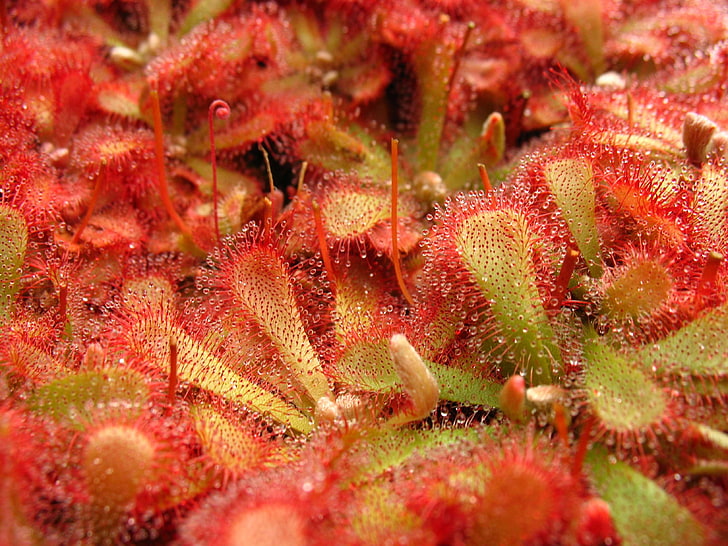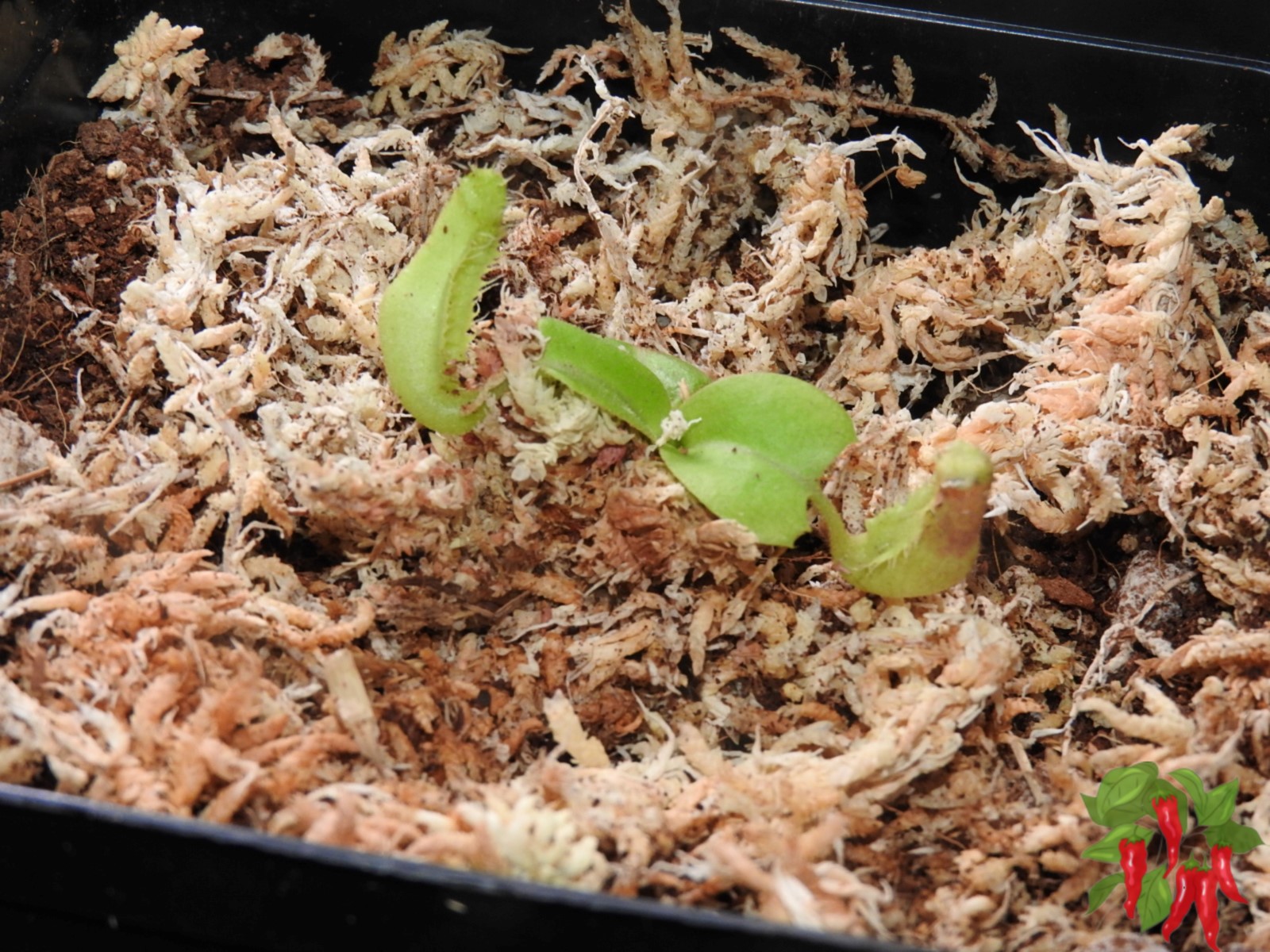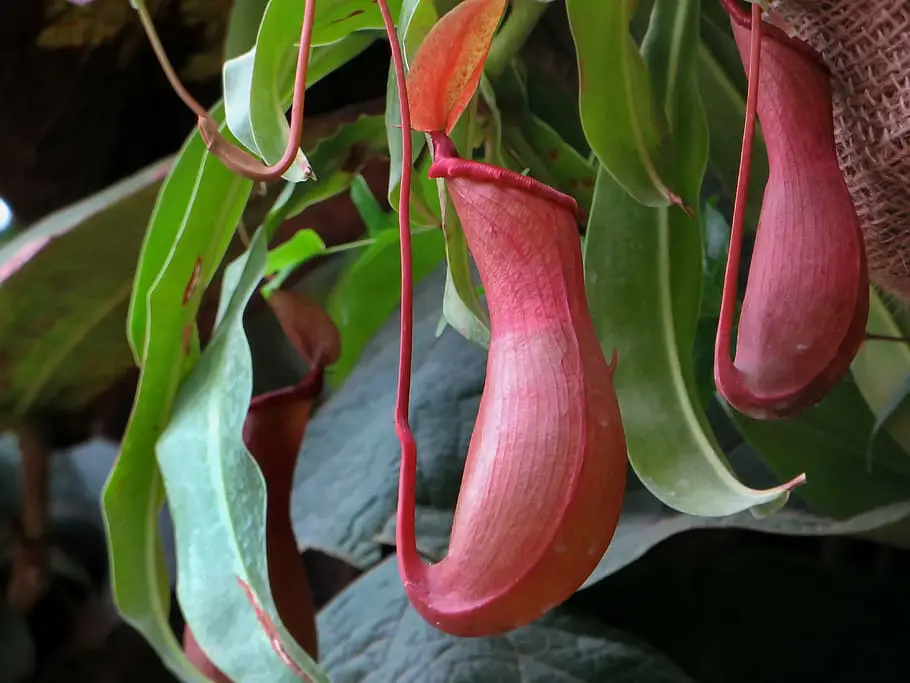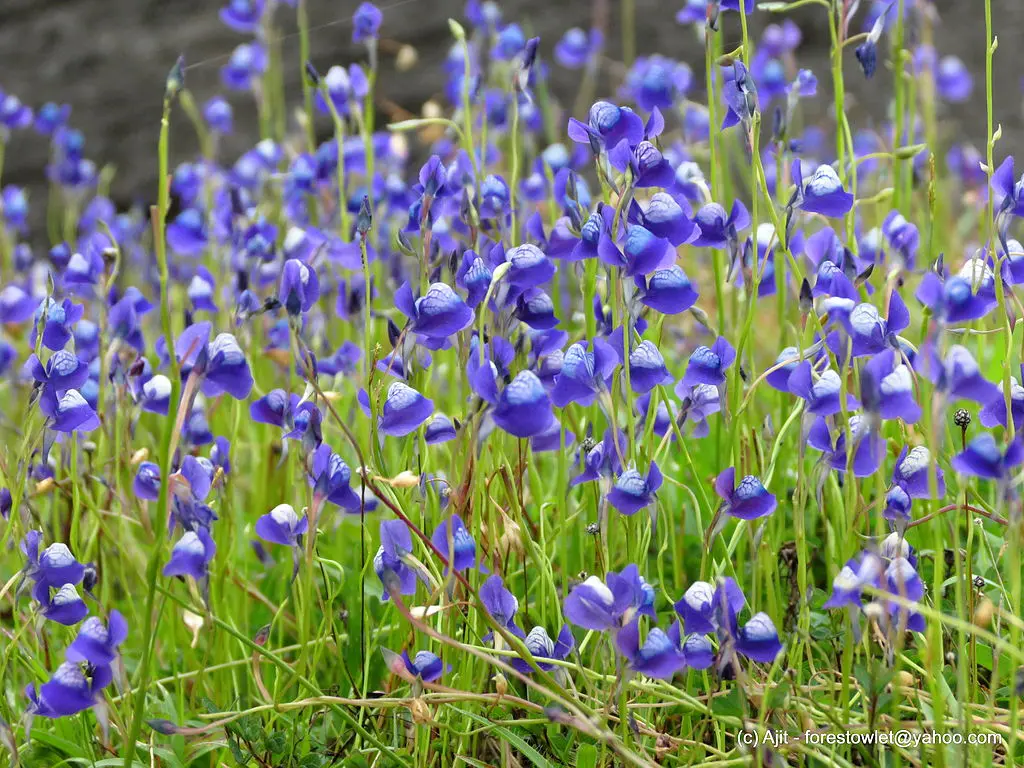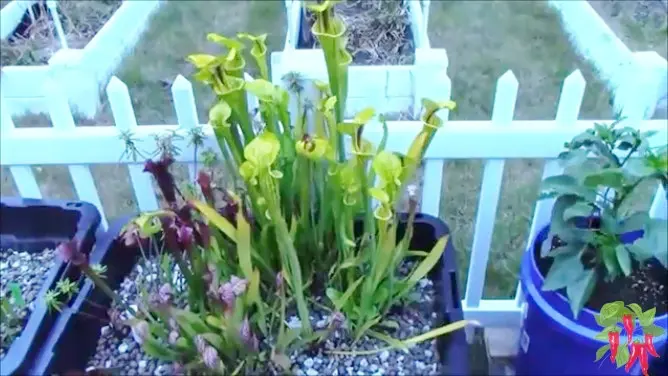This post contains affiliate links. If you buy something from one of our links we may earn a commission. Thanks
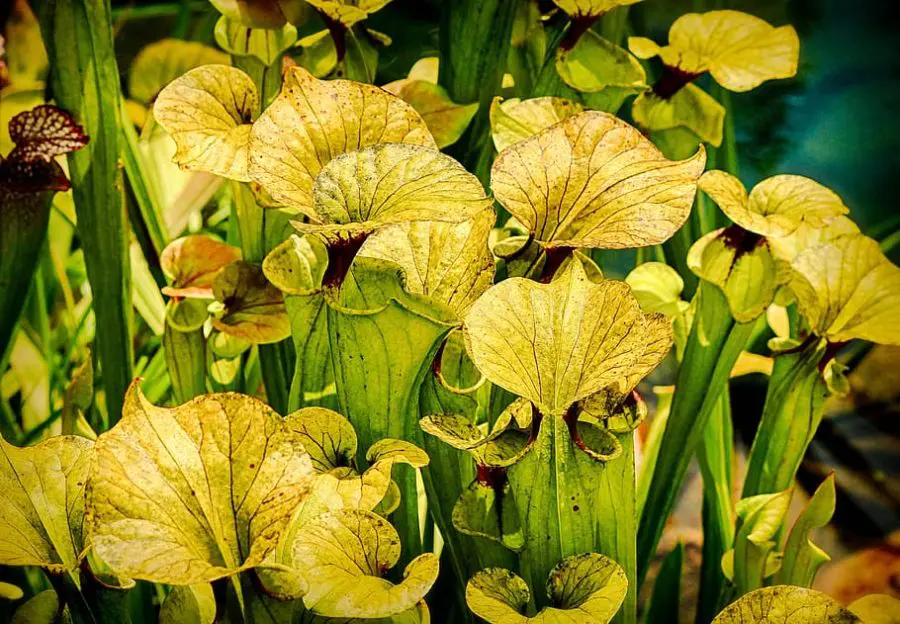
Dive into our guide on the best indoor carnivorous plants! Discover unique varieties that’ll turn your home into a captivating green haven.
Some of the best indoor carnivorous plants are Venus Flytrap, Sundews, Pitcher Plants, Butterworts, Bladderworts, and Nepenthes. Each offers unique trapping mechanisms and aesthetic appeal.
Introduction Best Indoor Carnivorous Plants
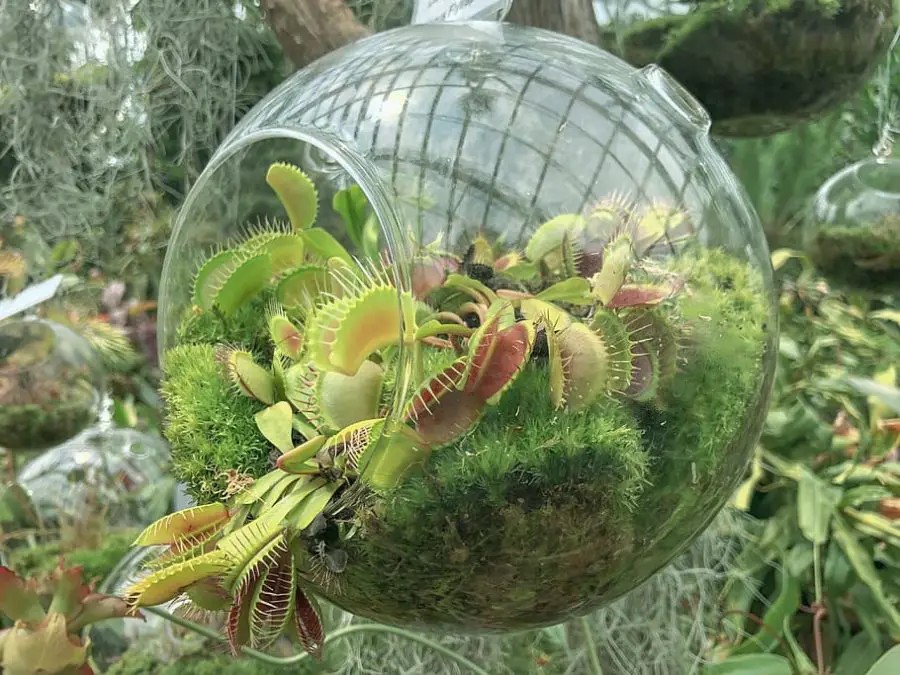
Ever thought of adding a touch of the wild to your living space? Well, the best indoor carnivorous plants might just be the answer!
These fascinating green wonders not only add intrigue to your home but also come with a host of benefits. Let’s explore!
Indoor gardening has taken a fascinating turn with the inclusion of carnivorous plants.
These unique flora not only add an exotic touch to homes but also serve a functional purpose by trapping pesky insects.
In this guide, we’ll delve into the world of carnivorous plants, exploring their origins, benefits, and some of the best varieties to cultivate indoors.
What Are Carnivorous Plants?
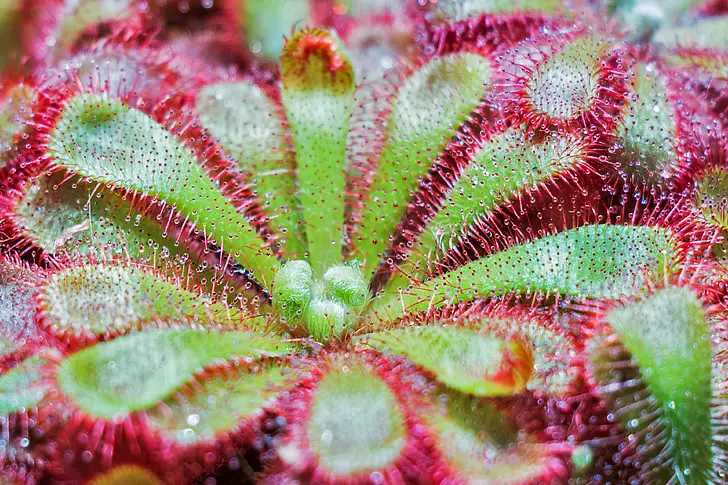
Carnivorous plants have always intrigued botanists and plant enthusiasts alike.
Their unique feeding habits set them apart from other plants, but what exactly are they, and how did they evolve?
Definition and characteristics
Carnivorous plants are a special group of flora that derive some or most of their nutrients by consuming small animals, primarily insects.
Unlike other plants that rely solely on soil nutrients, these plants have developed intricate mechanisms to trap and digest their prey.
Historical evolution and adaptation
The history of carnivorous plants dates back about 70 million years.
Genetic mutations, driven by nutrient-poor environments, led these plants to develop carnivorous habits.
Over time, as they adapted to different habitats, their trapping mechanisms evolved, making them one of nature’s most fascinating wonders.
Benefits of Growing Carnivorous Plants Indoors
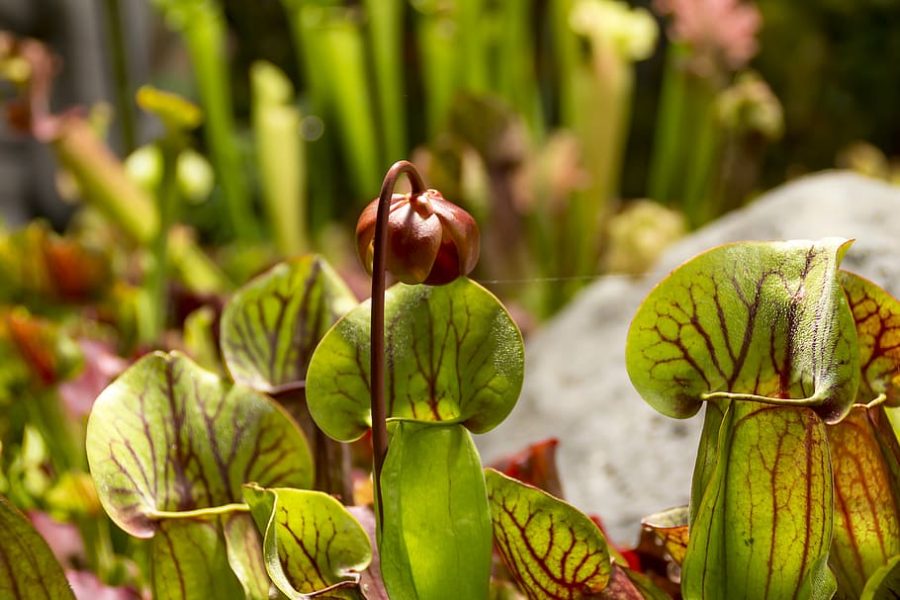
Beyond their captivating appearance and intriguing feeding habits, carnivorous plants offer several benefits, especially when grown indoors.
Let’s explore some reasons why these plants are becoming a popular choice for indoor gardeners.
Natural pest control
One of the primary advantages of having carnivorous plants indoors is their ability to act as natural pest controllers.
They are adept at trapping and consuming insects like flies, gnats, and mosquitos, reducing the need for chemical repellents.
Unique aesthetic appeal
Carnivorous plants, with their intricate trapping mechanisms and vibrant colors, can be a conversation starter.
Their exotic appearance adds a touch of wilderness to the indoor space, making them a centerpiece of attraction.
Top Carnivorous Plants to Grow Indoors
As the allure of carnivorous plants grows, many enthusiasts are keen to discover which varieties are best suited for indoor cultivation.
From the iconic Venus Flytrap to the lesser-known Bladderworts, each has its unique charm and care requirements.
Venus Flytrap
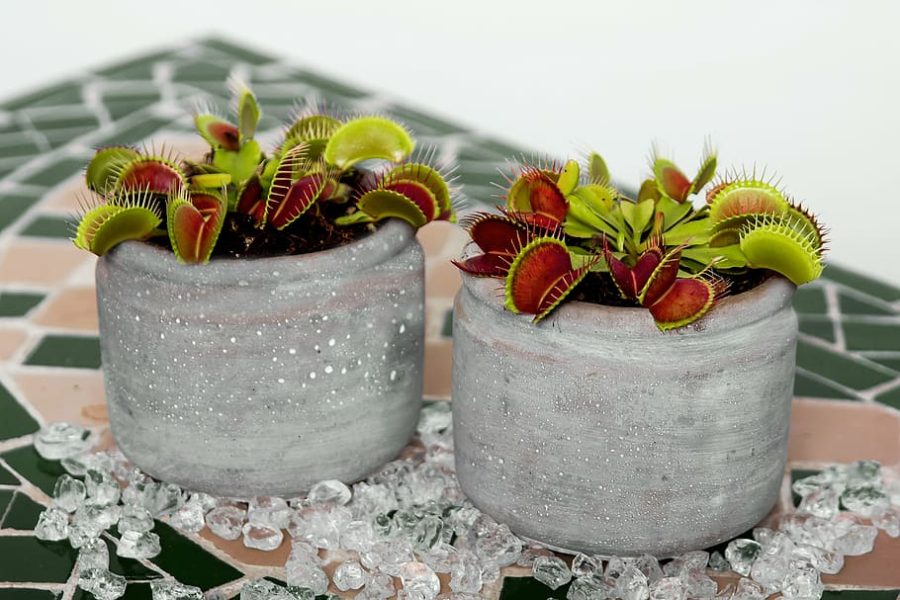
The Venus Flytrap is perhaps the most iconic of all carnivorous plants.
Recognized by its mouth-like traps, it’s a favorite among both beginners and seasoned plant enthusiasts.
These traps are modified leaves that contain nectar to attract their prey.
Once an insect touches the trigger hairs inside, the trap snaps shut.
Interestingly, unlike other indoor carnivorous plants listed here, Venus Flytraps require a winter chilling period to mimic their natural habitat and go into dormancy.
So as popular as they are they are not the easiest indoor carnivorous plants for beginners to start with unless you can provide them with a cold dormancy period.
Sundews
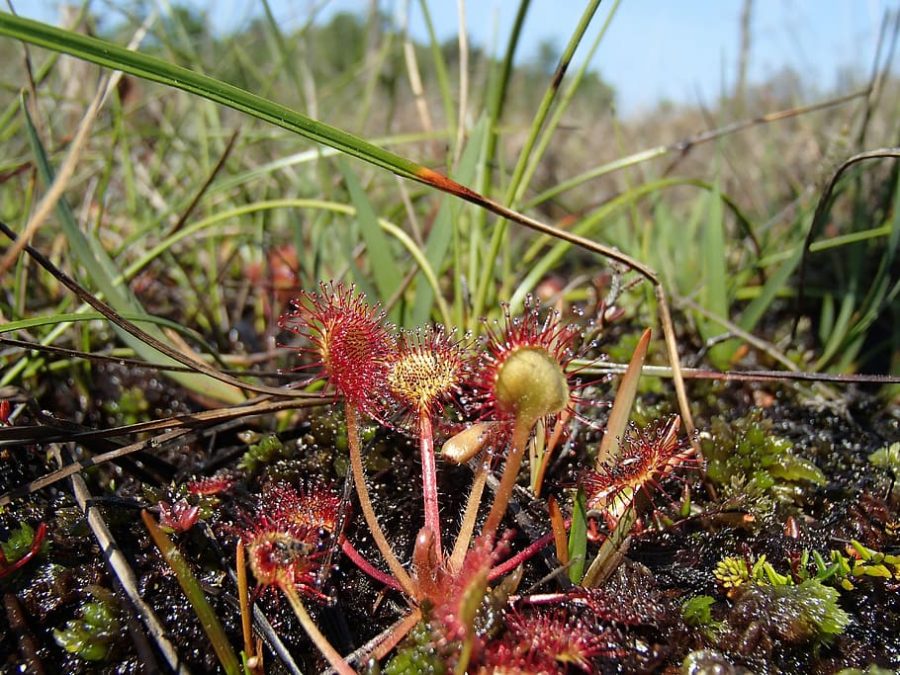
Sundews are captivating with their sticky, dew-covered tentacles that lure, trap, and digest insects.
Their trapping mechanism involves sticky pads that ensnare unsuspecting prey, wrapping them tighter as they struggle.
Sundew Varieties
Sundews (Drosera) are a diverse group of carnivorous plants with over 190 species. Here are some popular sundew varieties:
• Drosera capensis (Cape Sundew): Native to South Africa, this is one of the most common and easy-to-grow sundews. It has long, slender leaves covered in sticky tentacles.
• Drosera spatulata (Spoon-leaved Sundew): Found in various parts of Asia and Australia, this species has small, spoon-shaped leaves.
• Drosera rotundifolia (Round-leaved Sundew): Native to Europe, North America, and parts of Asia, it’s recognized by its round leaves and is commonly found in bogs.
• Drosera adelae (Lance-leaved Sundew): Originating from Australia, this sundew has lance-shaped leaves and thrives in warm, humid conditions.
• Drosera binata (Fork-leaved Sundew): This unique sundew has forked leaves, sometimes branching multiple times, giving it a distinct appearance.
• Drosera filiformis (Thread-leaved Sundew): Native to the eastern United States, it has long, thread-like leaves and is known to catch larger insects.
• Drosera aliciae (Alice’s Sundew): Another South African native, this sundew has rosette-forming leaves and is relatively easy to care for.
• Drosera burmannii: Found in Asia and Australia, this sundew is known for its incredibly fast trap speed.
These are just a few of the many sundew varieties available. Each has its unique appearance and care requirements, making them a fascinating addition to any carnivorous plant collection.
Pitcher Plants
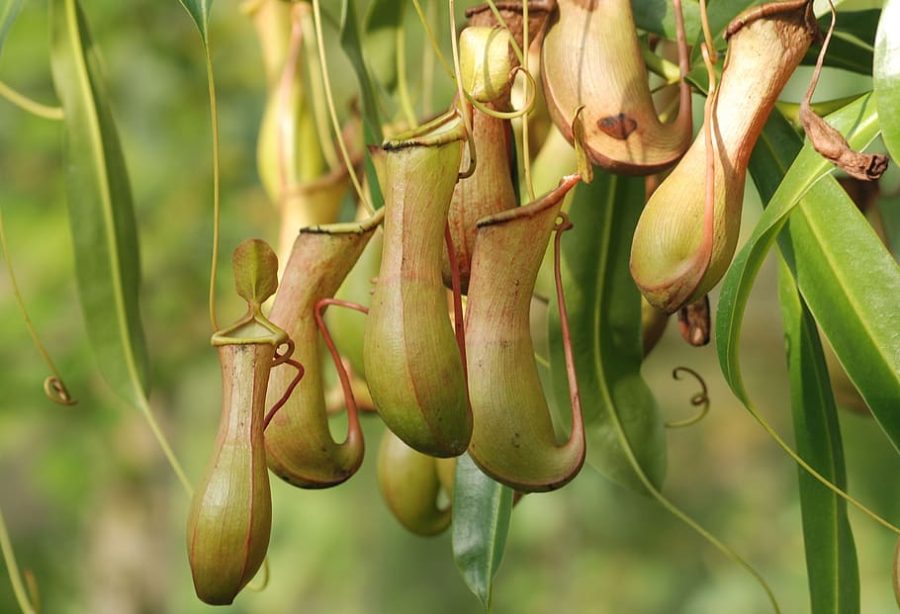
These plants are named for their pitcher-like structures that trap insects.
Attracted by the plant’s color and scent, insects slip into the pitcher, where they’re digested.
Each variety of pitcher plant has its unique appearance and trapping mechanism.
Most American Pitcher plants are Sarracenias with the exception of Cobra Lilies (Darlingtonia Californica).
While these plants can be started indoors they all require winter dormancy and will need a cold period.
Although they are beautiful and marvelous plants they are not the best carnivorous plants to grow indoors.
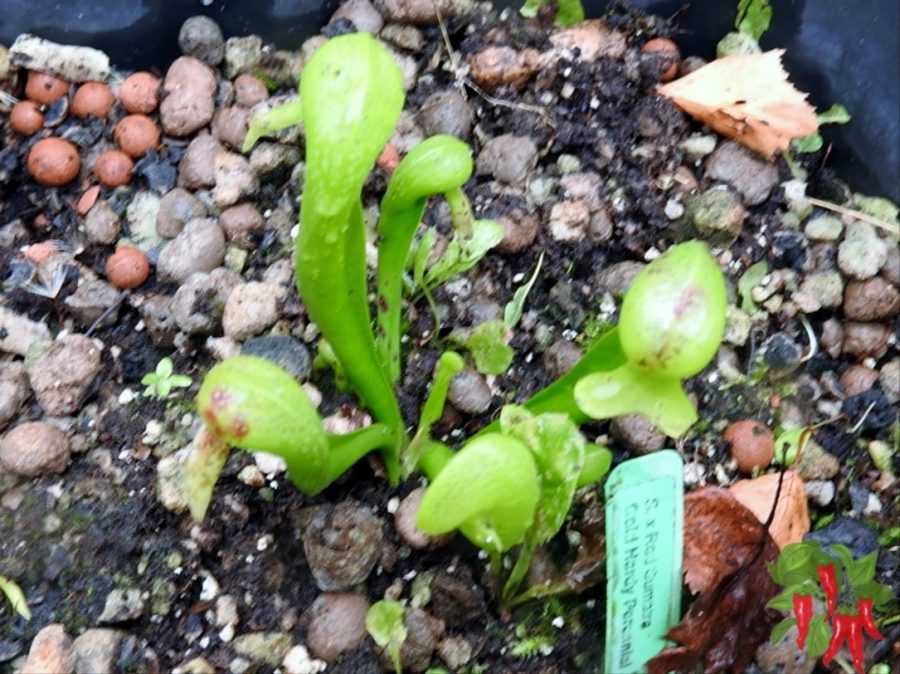
However please read on to find out about Nepenthes tropical pitcher plants which adapt perfectly to indoor conditions.
When you see them it is easy to understand why they are called pitcher plants.
Butterworts
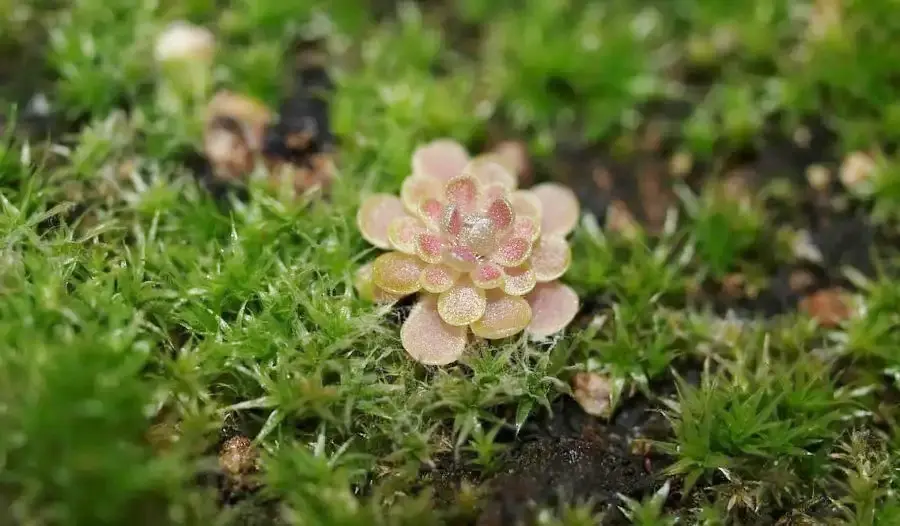
Butterworts, belonging to the genus Pinguicula, are not only known for their insect-trapping abilities but also for the pretty flowers they produce.
These flowers, often contrasting with their sticky, glistening leaves, add an unexpected touch of beauty to these carnivorous plants.
Butterworts employ a passive strategy. Their buttery, resin-coated leaves attract and ensnare insects, which are then digested by enzymes released by the plant.
Here are some popular Butterwort varieties and the lovely flowers they produce:
• Pinguicula moranensis: Native to Mexico and Guatemala, this species is admired for its large, violet flowers that stand out against its broad leaves.
• Pinguicula gigantea: Native to Oaxaca, Mexico, this species, while known for its large leaves, also produces delicate lavender flowers.
• Pinguicula primuliflora (Southern Butterwort): This species, found in the southeastern United States, showcases bright green leaves complemented by striking violet flowers.
• Pinguicula vulgaris (Common Butterwort): Widespread across Europe, Asia, and North America, it’s recognized for its deep purple flowers that contrast beautifully with its sticky green leaves.
• Pinguicula lusitanica: Native to western Europe, this butterwort boasts delicate white or pale pink flowers, adding a touch of elegance to its appearance.
• Pinguicula grandiflora: This European species is particularly admired for its large, striking blue flowers, which are among the most vibrant in the Butterwort family.
• Pinguicula agnata: Hailing from Mexico, this species not only has bright green leaves but also produces beautiful purple or white flowers, making it a favorite among enthusiasts.
• Pinguicula ehlersiae: Another gem from Mexico, it’s known for its pink flowers that add a pop of color to its green foliage.
The combination of their insect-trapping leaves and their vibrant flowers makes Butterworts a multifaceted addition to any plant collection.
Their blooms offer a delightful contrast to their carnivorous nature, showcasing the diverse beauty of the plant world.
Bladderworts
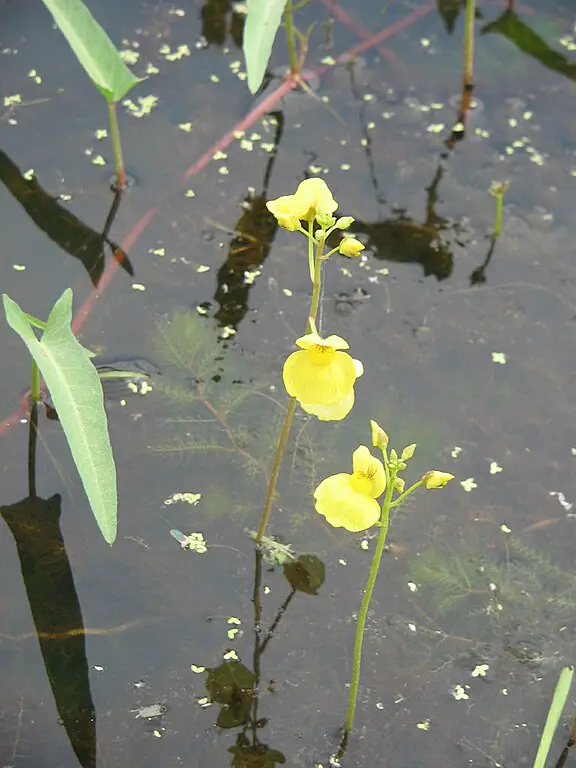
Bladderworts, belonging to the genus Utricularia, are a diverse group of carnivorous plants known for their unique trapping mechanism.
Unlike other carnivorous plants that use sticky or modified leaves to trap prey, bladderworts utilize tiny, bladder-like structures to capture their food.
Terrestrial vs. Aquatic Bladderworts:
Terrestrial Bladderworts: These grow in moist, sandy, or peaty soils. Their bladders are typically found underground.
When tiny organisms, like protozoa or nematodes, touch the trigger hairs on the bladders, the trapdoor quickly opens, creating a vacuum that sucks the prey inside.
The door then closes, trapping the organism, which is subsequently digested.
Popular Terrestrial Varieties:
• Utricularia sandersonii: Known for its beautiful blue and white flowers that resemble bunny ears.
• Utricularia livida: Recognized by its small, lavender flowers and is often grown as a terrestrial ornamental plant.
• Utricularia subulata: A widespread species with tiny yellow flowers.
Aquatic Bladderworts: These bladderworts float in fresh water and have bladders that function similarly to their terrestrial counterparts.
However, they target tiny aquatic organisms. The bladders are on their feathery, submerged leaves.
When small aquatic creatures, like water fleas or tiny larvae, touch the trigger hairs, they are quickly sucked into the bladder.
Aquatic bladderworts are fascinating in their own right, with their delicate, feathery leaves and specialized bladders designed to capture tiny aquatic organisms. Here are some popular aquatic bladderwort varieties:
• Utricularia gibba (Humped Bladderwort): This is one of the most widespread aquatic bladderworts. It has delicate, thread-like stolons with tiny bladders and produces bright yellow flowers above the water surface.
• Utricularia inflata (Swollen Bladderwort): Native to North America, this species is known for its large, inflated stems that help it float. It produces yellow flowers that rise above the water.
• Utricularia macrorhiza (Greater Bladderwort): Found in North America, this species has yellow flowers and is known for its large bladders that can capture relatively bigger prey like mosquito larvae.
• Utricularia vulgaris (Common Bladderwort): This species is widespread in Europe and parts of Asia. It has finely divided, feathery leaves and produces bright yellow flowers.
• Utricularia radiata (Small Floating Bladderwort): Native to the southeastern United States, this bladderwort has small, white flowers with a yellow center. It’s known for its radiating, fan-shaped leaves.
• Utricularia aurea: Found in Asia, this species has beautiful golden-yellow flowers and is often seen floating in calm freshwater bodies.
• Utricularia bifida: This species is native to Asia and Australia and is known for its delicate, divided leaves and pale lavender flowers.
These aquatic bladderworts are not only efficient predators but also add beauty to freshwater habitats with their delicate structures and attractive flowers.
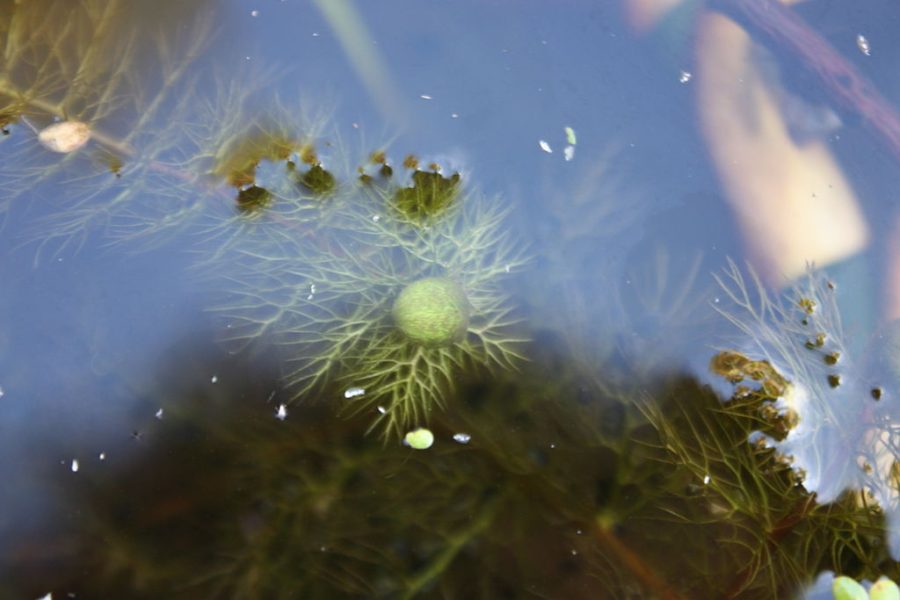
They can be a captivating addition to water gardens or ponds, where their trapping mechanisms can be observed in action.
Bladderworts, whether terrestrial or aquatic, are a testament to the incredible adaptability and diversity of carnivorous plants.
Their intricate trapping mechanism and the speed at which they operate make them a fascinating subject of study and a unique addition to any plant collection.
Nepenthes (Tropical Pitcher Plants)

Nepenthes, often referred to as Tropical Pitcher Plants, are a diverse group of carnivorous plants known for their elegant and varied pitchers.
These plants have evolved to lure insects into their deep, liquid-filled pitchers, where the unsuspecting prey meets its end.
Highland vs. Lowland Species
Nepenthes species can be broadly categorized into highland and lowland types based on their natural habitats.
Highland Species:
These plants originate from higher altitudes and prefer cooler daytime temperatures and chilly nights.
They are often favored for indoor cultivation because many homes can mimic these cooler conditions, especially during the night.
Lowland Species:
These are from tropical lowland areas and prefer consistently warm conditions both day and night.
They can be a bit more challenging to grow indoors unless you can provide the warmth they crave.
Soil
Nepenthes prefer a well-draining soil mix, often composed of sphagnum moss, perlite, and a bit of orchid bark.
It’s essential to avoid regular potting soil as it provides too many nutrients and holds too much water that can lead to root rot.
Light
Bright, indirect light is ideal for Nepenthes. While they appreciate a good amount of light, direct sunlight can scorch their leaves.
If growing indoors, a location near a window with filtered light or using artificial grow lights can be beneficial.
Growth Habit
As Nepenthes mature, they exhibit a fascinating growth habit after a few years they start to vine.
This vining nature means they can be grown in hanging baskets or allowed to climb supports.
As they vine, they’ll produce larger and more impressive pitchers, showcasing their true beauty.
Why Highland Species are Preferred
The preference for highland species in indoor cultivation stems from their adaptability to cooler conditions.
Many indoor environments, especially during the night, can easily mimic the cooler temperatures of highland regions.
Additionally, highland species tend to have a more diverse range of pitcher shapes and colors, adding to their appeal.
With the right care and environment, Nepenthes can be a show-stopping addition to any indoor plant collection.
Their unique pitchers, combined with their vining growth habit, make them a captivating sight to behold.
Nepenthes truncata
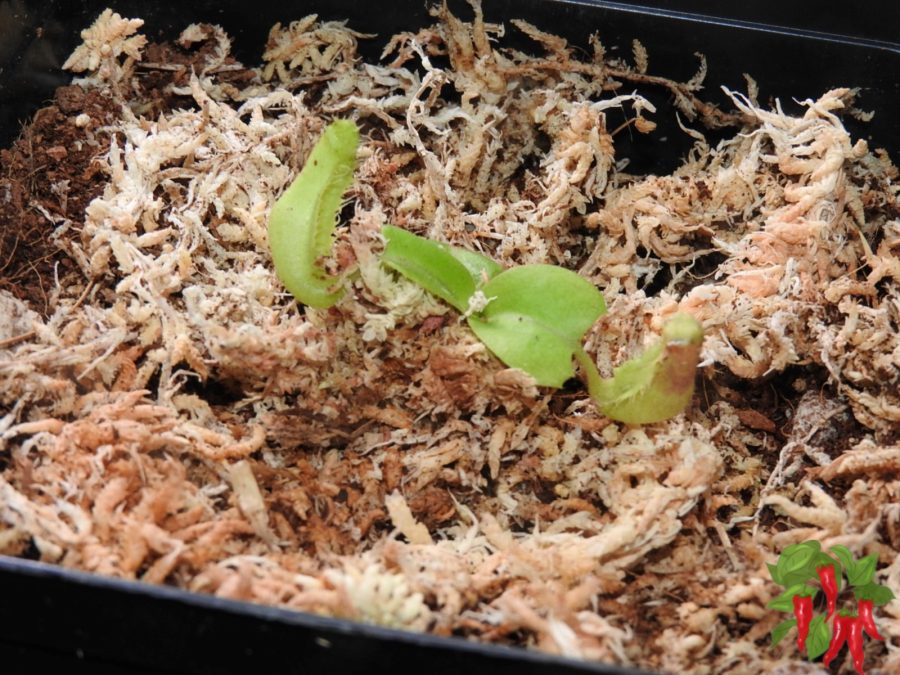
Nepenthes truncata is a standout among the carnivorous pitcher plants, both for its impressive size and its relative ease of cultivation.
Native to the Philippines, this species is known for its large, tubby pitchers that can hold a significant amount of liquid.
The pitchers are characterized by their broad, truncated peristome (the lip of the pitcher) and can often reach sizes large enough to trap not just insects but even small rodents!
What makes Nepenthes truncata particularly appealing to enthusiasts, especially beginners, is its adaptability.
It’s often hailed as one of the easiest Nepenthes to grow, making it an excellent choice for those new to the world of carnivorous plants.
Apart from truncata, other popular Nepenthes varieties include Nepenthes ventricosa, Nepenthes alata, and Nepenthes sanguinea, each bringing its unique charm to the diverse world of pitcher plants.
General Care Tips for Carnivorous Plants
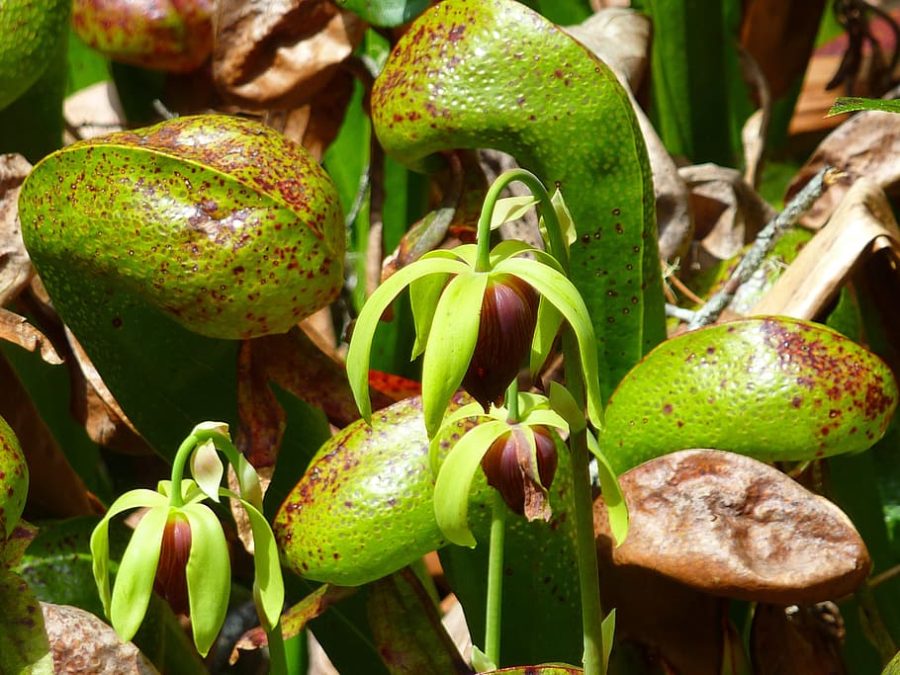
While carnivorous plants are undoubtedly unique in their feeding habits, their care isn’t overly complicated. With a few general guidelines, you can ensure your carnivorous plants thrive indoors.
Watering
Water quality is paramount when it comes to carnivorous plants.
Using distilled or rainwater is not just a recommendation but a necessity.
Tap water often contains minerals and chemicals that can be detrimental to these plants, leading to mineral buildup in the soil and potential harm to the plant’s roots.
It’s essential to keep the soil consistently moist, mirroring the natural boggy habitats where many carnivorous plants originate.
Overwatering can be as harmful as underwatering, so it’s crucial to strike a balance.
A good practice is to place the pot in a tray filled with water, allowing the plant to absorb moisture from the bottom up.
Soil
The soil mix for carnivorous plants is unlike typical potting mixes. These plants have evolved in nutrient-poor environments, which means they thrive in peaty, low-nutrient soils.
A common mix includes sphagnum moss and perlite, ensuring good aeration and moisture retention.
Avoid using fertilized potting soils, as the added nutrients can harm the plants.
Regularly checking the soil’s pH and ensuring it remains acidic can also be beneficial.
Light
Carnivorous plants have a high appetite for sunlight. They thrive in bright conditions, which helps them produce their vibrant colors and maintain healthy growth.
While they love light, direct midday sun can sometimes be too intense for certain species, causing leaf burn.
It’s essential to understand the specific light requirements of each variety.
Some might flourish in direct morning sunlight and partial afternoon shade, while others might prefer filtered light throughout the day.
Humidity and Temperature
Humidity plays a pivotal role in the well-being of carnivorous plants. Many of these plants hail from humid bogs and swamps, so replicating this environment can boost their health.
Regular misting, especially during dry periods, can help maintain humidity.
Additionally, placing plants on a tray filled with water can increase ambient humidity.
You can also keep your plants in a terrarium. An empty fish tank makes a good home for carnivorous plants and can help maintain humidity levels by adding a few inches of wet gravel to the bottom.
Temperature-wise, while many carnivorous plants are adaptable, they generally prefer cooler nights and warmer days, mimicking their natural habitats.
Pests and Diseases
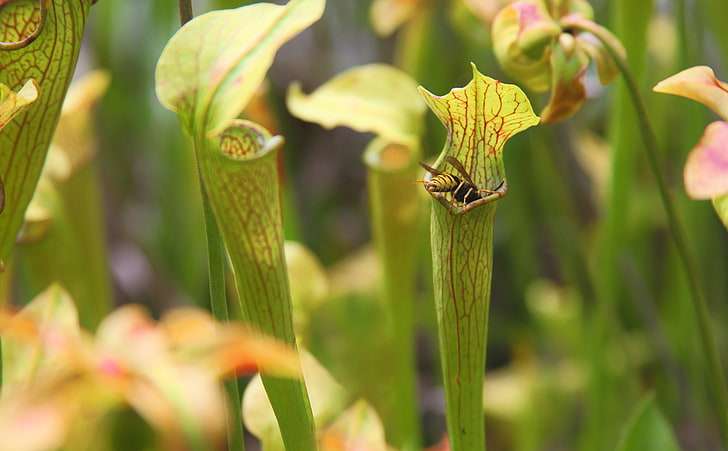
Ironically, while carnivorous plants are insect predators, they’re not exempt from pest attacks.
Aphids, spider mites, and fungus gnats can sometimes become problematic.
Regularly inspecting plants and ensuring they’re not stressed can prevent many issues.
If pests are detected, early intervention using insecticidal soap or neem oil can be effective.
Additionally, ensuring good air circulation can prevent fungal diseases, which can sometimes afflict these plants.
FAQs
Q: Why do carnivorous plants eat insects?
A: Carnivorous plants have evolved to derive nutrients from insects due to the nutrient-poor soils in which they naturally grow.
Q: How often should I feed my carnivorous plant?
A: They don’t require frequent feeding. Insects they naturally trap, especially when placed in a location with occasional bugs, are often sufficient.
Q: Can I use tap water for my carnivorous plants?
A: It’s best to avoid tap water as it might contain minerals harmful to these plants. Instead, use distilled or rainwater.
Q: How do I increase the humidity for my plant?
A: Regular misting, placing plants on a tray of water, or using a humidifier can help maintain high humidity levels.
Conclusion
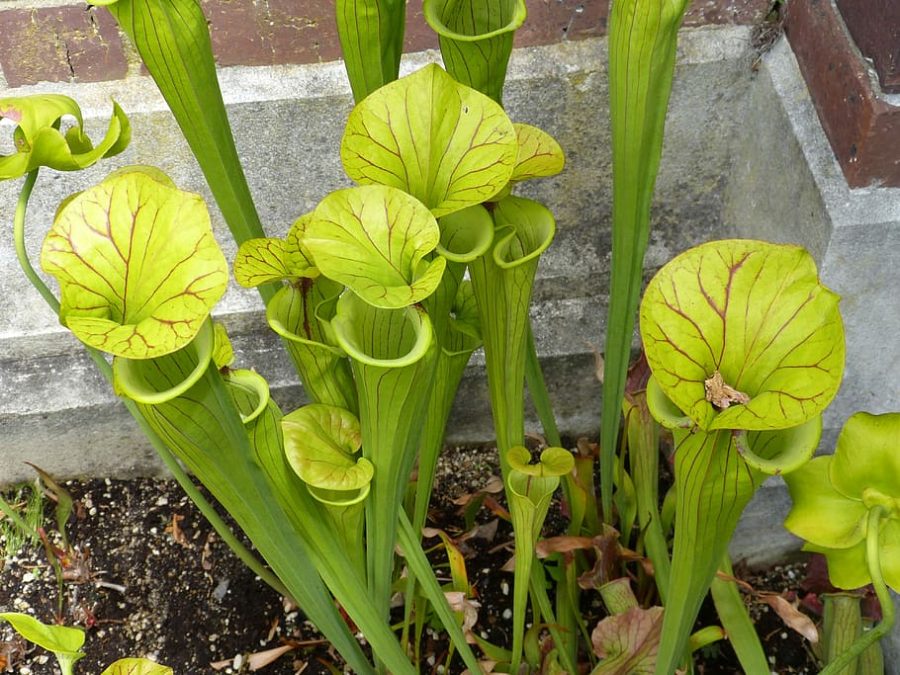
Carnivorous plants offer a unique blend of beauty and functionality to indoor spaces.
Their intriguing trapping mechanisms, combined with their aesthetic appeal, make them a must-have for plant enthusiasts.
With the right care and understanding of their needs, these plants can be a captivating addition to any indoor garden.
For the best indoor carnivorous plant care, use distilled or rainwater, provide bright indirect light, and ensure well-draining soil. Maintain high humidity, avoid tap water, and monitor for pests. Regular care ensures healthy growth and optimal trapping efficiency.
Adaptability:
One of the remarkable traits of these plants is their adaptability. Whether you live in a humid environment or a dry one, with the right care, these plants can thrive and become a focal point in your space.
Educational Value:
Beyond their beauty, these plants provide an excellent opportunity to learn.
Observing their trapping mechanisms in action can be an educational experience for both kids and adults, making them not just decorative but also informative.
With the right care and understanding of their needs, these plants can be a captivating addition to any indoor garden.










